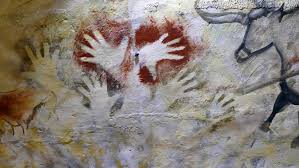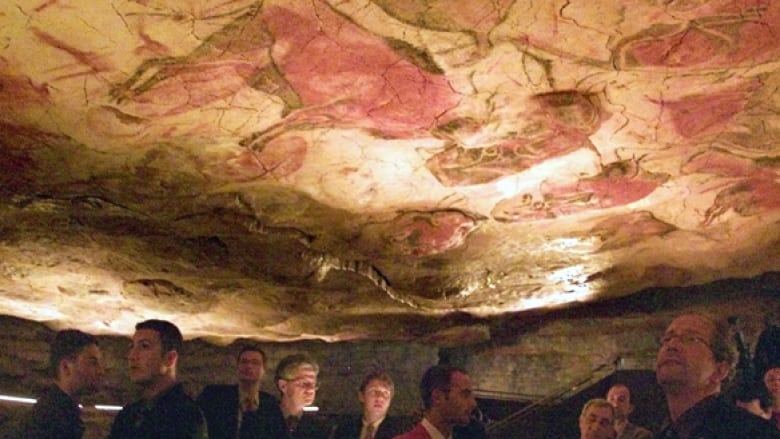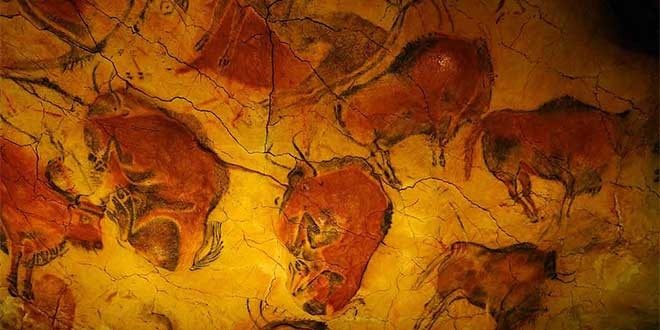Handprints and Handwriting
Cave of Altamira
Altamira located in Spain, was first discovered by accident, by a hunter in 1868. The cave was visited again in 1876, by a noble man, Marcelino Sanz de Sautuola, and he declared ownership of this cave. At this time Sautuola thought nothing of the cave, he did not think it was anything interesting. However, in 1878, Sautuola attended the Universal Exhibition in Paris, and it was there he viewed many pieces of carved bone. Sautuola then became exited, as he thought about the potential his cave might have. So, the next year he returned to the Cave of Altamira and began an excavation process. Sautuola, was accompanied by Juan Vilanova y Piera, an archeologist from Madrid. They began to uncover the caves’ history, and initially they discovered animal bones, and tools made of stone. While they were occupied excavating the entrance to the cave, Sautuola’s eight-year-old daughter, Maria explored further into the cave, and she came across some of the first paintings on the wall. The paintings were representations of a bison, but Maria thought they were paintings of a bull, as bison were considered extinct in Spain at that time. Only after she got her father’s attention, did he acknowledge the importance of the cave. The following year, after these discoveries were made, Sautuola published a report describing the artifacts he recovered in Altamira. He also tried to formulate a connection to what he had seen in the Universal Exhibit in Paris, as he concluded that the same people were responsible for the same paintings and tools. Unfortunately, his results were mocked, and people accused him of forgery. He spent the rest of his life trying to have others believe, but unfortunately, he died in 1888 as a humiliated, and defeated man.
At the beginning of the 20th Century, in 1902, the prehistorians began to believe that the artifacts were genuine. The reason for their change of heart, was that similar caves and engravings were being discovered. For example, in France, the Cave Lascaux, in the Dordogne, was found to also display bison paintings. Another Cave, Les Combarelles also contained similar engravings to those that had already been discovered. After many other discoveries, and after many debates, the final consensus was that the cave of Altamira’s paintings and engravings, were from the Paleolithic Age.
The cave of Altamira is 971 feet long, and there are many archaeological remains from the two different occupants in the Paleolithic Age. There were the Solutrean people from around 21000 to 17000 years ago, and then the Magdalenian people existed from 17000 to 11000 years ago. The remaining artifacts also included engraved shoulder blades from animals, and these bones have been dated to 14480 years old using radiocarbon technology. With the ceiling of the cave overwhelmed with paintings and engravings it concludes that the creators were often crouched and worked above their heads, as the caves were typically 3.8 to 8.7 feet high. These images were accomplished in red and black colours, with some additional violet accents.
Citations
https://www.britannica.com/place/Altamira
https://archaeology-travel.com/news/altamira-cave-re-open-for-visitors/



